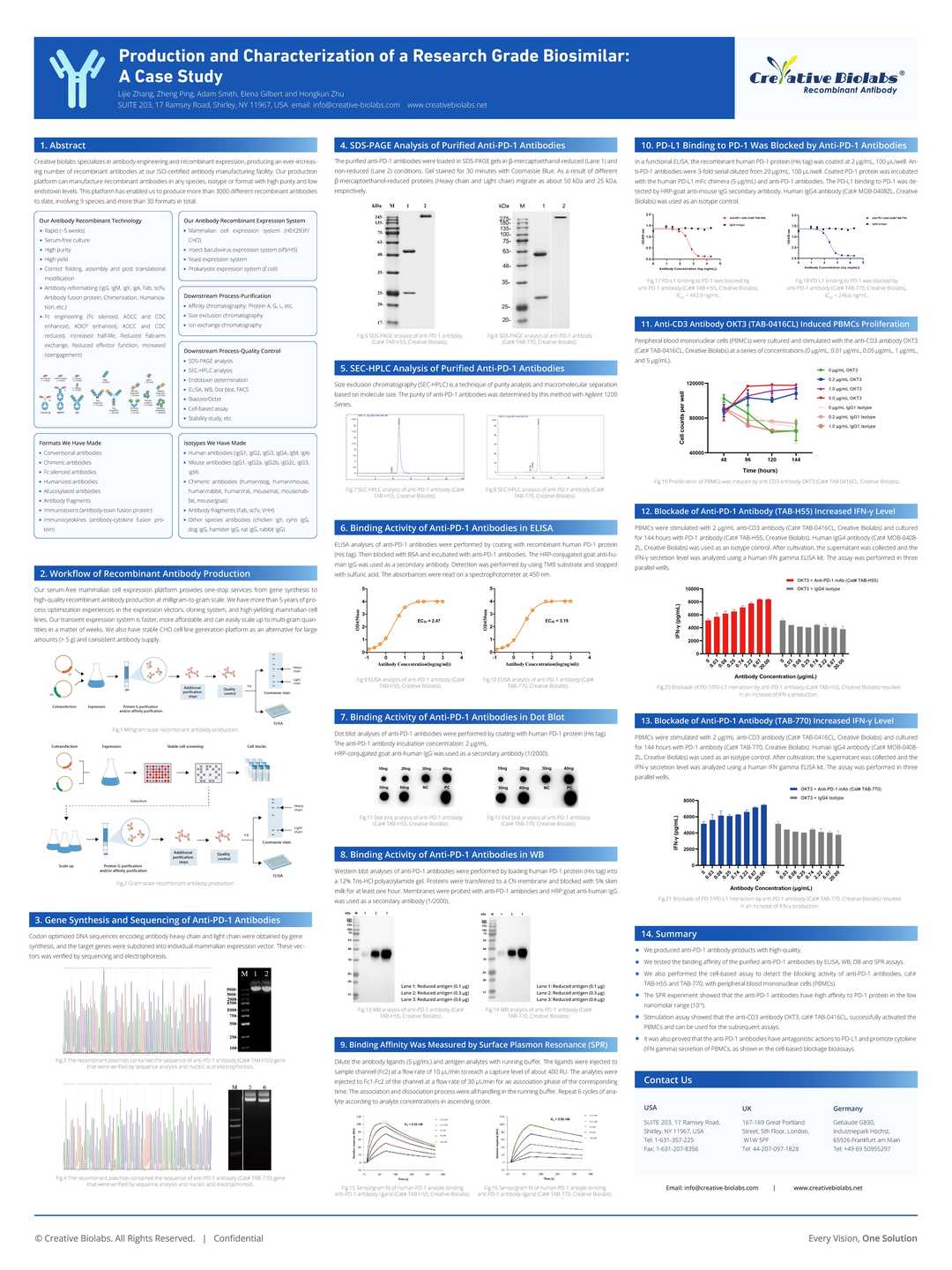Rabbit Anti-UHRF1 Recombinant Antibody (clone R06-1C4)
CAT#: VS3-FY1609
The R06-1C4 recombinant monoclonal antibody demonstrates high specificity in target human UHRF1. The antibody is recommended for detection of UHRF1 protein by WB, IP. The specificity of the UHRF1 antibody was confirmed by western blot analysis of UHRF1 in K562, Hela lysates.






Specifications
- Immunogen
- Recombinant human UHRF1 protein
- Host Species
- Rabbit
- Type
- Rabbit IgG
- Specificity
- Human UHRF1
- Species Reactivity
- Human
- Clone
- R06-1C4
- Applications
- Western Blot, Immunoprecipitation
- MW
- The calculated weight of the target protein is approximately 90 kDa, while the observed molecular weight stands at 97 kDa.
- Related Disease
- Cancer
Product Property
- Purification
- Affinity Purified
- Format
- Liquid
- Concentration
- Please refer to the vial label for the specific concentration.
- Storage
- Centrifuge briefly prior to opening vial. Store at +4°C short term (1-2 weeks). Aliquot and store at -20°C long term. Avoid repeated freeze/thaw cycles.
Applications
- Application Notes
- Western Blot: 1/500-1/1000
Immunoprecipitation: 1/20
Target
- Alternative Names
- Ubiquitin Like With PHD And Ring Finger Domains 1; Ubiquitin-Like PHD And RING Finger Domain-Containing Protein 1; Inverted CCAAT Box-Binding Protein Of 90 KDa; RING-Type E3 Ubiquitin Transferase UHRF1; Nuclear Zinc Finger Protein Np95; Transcription Factor ICBP90; RING Finger Protein 106; Nuclear Protein 95; HuNp95; ICBP90; RNF106
- Gene ID
- 29128
- UniProt ID
- Q96T88
- Cellular Localization
- Nucleus
- Post Translation Modifications
- Phosphorylation at Ser-298 of the linker region decreases the binding to H3K9me3. Phosphorylation at Ser-639 by CDK1 during M phase impairs interaction with USP7, preventing deubiquitination and leading to degradation by the proteasome., Ubiquitinated; which leads to proteasomal degradation. Autoubiquitinated; interaction with USP7 leads to deubiquitination and prevents degradation. Ubiquitination and degradation takes place during M phase, when phosphorylation at Ser-639 prevents interaction with USP7 and subsequent deubiquitination. Polyubiquitination may be stimulated by DNA damage.
- Protein Refseq
- NP_001041666.1; NP_001276979.1; NP_001276980.1
- Function
- Multidomain protein that acts as a key epigenetic regulator by bridging DNA methylation and chromatin modification. Specifically recognizes and binds hemimethylated DNA at replication forks via its YDG domain and recruits DNMT1 methyltransferase to ensure faithful propagation of the DNA methylation patterns through DNA replication. In addition to its role in maintenance of DNA methylation, also plays a key role in chromatin modification: through its tudor-like regions and PHD-type zinc fingers, specifically recognizes and binds histone H3 trimethylated at 'Lys-9' (H3K9me3) and unmethylated at 'Arg-2' (H3R2me0), respectively, and recruits chromatin proteins. Enriched in pericentric heterochromatin where it recruits different chromatin modifiers required for this chromatin replication. Also localizes to euchromatic regions where it negatively regulates transcription possibly by impacting DNA methylation and histone modifications. Has E3 ubiquitin-protein ligase activity by mediating the ubiquitination of target proteins such as histone H3 and PML. It is still unclear how E3 ubiquitin-protein ligase activity is related to its role in chromatin in vivo. Plays a role in DNA repair by cooperating with UHRF1 to ensure recruitment of FANCD2 to interstrand cross-links (ICLs) leading to FANCD2 activation.
Customer Review
There are currently no Customer reviews or questions for VS3-FY1609. Click the button above to contact us or submit your feedback about this product.
Submit Your Publication
Published with our product? Submit your paper and receive a 10% discount on your next order! Share your research to earn exclusive rewards.
Downloadable Resources
Download resources about recombinant antibody development and antibody engineering to boost your research.
Product Notes
This is a product of Creative Biolabs' Hi-Affi™ recombinant antibody portfolio, which has several benefits including:
• Increased sensitivity
• Confirmed specificity
• High repeatability
• Excellent batch-to-batch consistency
• Sustainable supply
• Animal-free production
See more details about Hi-Affi™ recombinant antibody benefits.
Datasheet
MSDS
COA
Certificate of Analysis LookupTo download a Certificate of Analysis, please enter a lot number in the search box below. Note: Certificate of Analysis not available for kit components.
Isotype Control
- CAT
- Product Name
Secondary Antibody
- CAT
- Product Name
See other products for "UHRF1"
Select a product category from the dropdown menu below to view related products.
| CAT | Product Name | Application | Type |
|---|---|---|---|
| VS3-QX1219 | Mouse Anti-UHRF1 Recombinant Antibody (clone 1H9-D3-E11) | WB | Mouse IgG2b |
| VS3-CJ68 | Mouse Anti-UHRF1 Recombinant Antibody (VS3-CJ68) | WB, ELISA | Mouse IgG |
| VS7-0425-WR1087 | Mouse Anti-UHRF1 Recombinant Antibody (clone 2A8C7) | WB, IHC | Mouse IgG1 |
| VS7-0425-WR1088 | Mouse Anti-UHRF1 Recombinant Antibody (clone 1A1B1) | WB, IHC, ICC, FC | Mouse IgG2b |
| VS7-0425-WR1089 | Mouse Anti-UHRF1 Recombinant Antibody (VS7-0425-WR1089) | WB, IF, ICC | Mouse IgG |
| CAT | Product Name | Application | Type |
|---|---|---|---|
| VS-0325-XY2434 | Anti-UHRF1 Immunohistochemistry Kit | IHC | |
| VS-0525-XY7739 | Anti-Mouse UHRF1 Immunohistochemistry Kit | IHC | |
| VS-0525-XY7738 | Anti-Human UHRF1 Immunohistochemistry Kit | IHC | |
| VS-0525-XY7740 | Anti-Rat UHRF1 Immunohistochemistry Kit | IHC |
Popular Products

Application: WB, ELISA, FC, IP, FuncS, IF, Neut

Application: FC, IHC, FuncS, Inhib, Cyt

Application: Neut, ELISA, IF, IP, FuncS, FC, WB

Application: WB, ELISA, FC, IP, FuncS, IF, Neut

Application: ELISA, WB, Neut, Funcs, IHC, Inhib

Application: WB, ELISA, IF

Application: ELISA, IHC, FC, IP, IF, FuncS

Application: Neut, ELISA, IF, IP, FuncS, FC
For research use only. Not intended for any clinical use. No products from Creative Biolabs may be resold, modified for resale or used to manufacture commercial products without prior written approval from Creative Biolabs.
This site is protected by reCAPTCHA and the Google Privacy Policy and Terms of Service apply.























